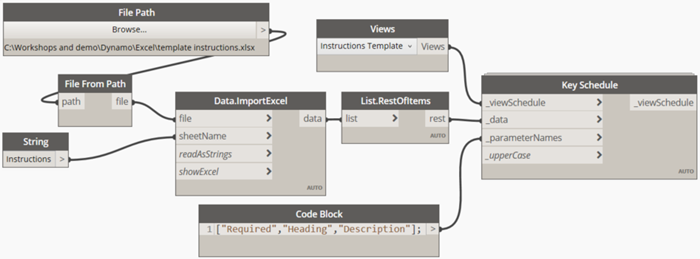Unlocking New Capabilities: Improve Revit Tools with the Right Plugins
Wiki Article
Understanding the Art of Information Combination: Exactly How to Seamlessly Import Excel Data Into Revit
In this article, we will assist you via the procedure of grasping the art of information integration. Get prepared to prepare your Excel information easily and follow our step-by-step overview to import documents right into Revit. With our best techniques, you'll accomplish information combination success in no time.Recognizing the Importance of Information Assimilation in Revit
Understanding the relevance of information integration in Revit is critical for smooth importing of Excel data. When you incorporate data from Excel into Revit, it allows you to successfully upgrade and handle info throughout the entire project. This assimilation ensures that your layout and construction process is accurate and current.By integrating data, you can easily import and upgrade specifications, schedules, and even geometry in Revit. This removes the need for manual data entrance, conserving you time and decreasing the risk of mistakes. With Revit's information combination capabilities, you can keep uniformity and accuracy in your project, while also enhancing collaboration amongst employee.

Checking Out the Excel Data Layout for Revit Assimilation

In order to efficiently incorporate Excel documents into Revit, it is essential to guarantee that the data is formatted properly. This includes properly classifying rows and columns, in addition to structuring the information in a means that is suitable with Revit's information schema. Revit makes use of specific criteria and categories to organize data, so it is necessary to straighten the Excel information with these specifications to make sure a seamless assimilation.
Additionally, it is essential to keep in mind that Revit just sustains particular data types when importing from Excel. These include message, numbers, and days. Any kind of various other information kinds, such as solutions or conditional format, will not be identified by Revit and may cause issues throughout the integration process.
Preparing Your Excel Information for Seamless Import Into Revit
To guarantee a smooth integration procedure, you'll require to effectively layout and tag the columns and rows in your Excel data before importing it into Revit. Due to the fact that it allows Revit to accurately interpret and arrange your information, this action is essential. Begin by analyzing your Excel data and identifying which rows and columns contain pertinent details for your Revit project. Make sure to classify each column with a descriptive and clear header. This will certainly help you and others easily understand the function of each column and avoid confusion throughout the import procedure.Next, make certain that the information in each column is correctly formatted. If you have a column for dimensions, make sure that all measurements are constantly formatted in the very same systems of dimension. Revit depends on consistent format to accurately interpret and import data.
Additionally, it is essential to inspect for any type of vacant cells or incongruities in your data. Revit may not have the ability to read or import data from cells that are vacant or have errors. It is advised to assess your Excel information and cleanse up any kind of disparities before importing it into Revit.
Step-By-Step Guide to Importing Excel Info Into Revit
Once you have actually properly formatted and labeled your Excel information, you can easily import it into Revit by following this detailed guide. To begin, open Revit and browse to the "Insert" tab. Click "Import CAD" and pick "Import Excel" from the dropdown menu. A new window will show up, asking you to find the Excel documents you wish to import. Search your computer system and select the Excel file, after that click "Open."Next, a dialog box will certainly show up, permitting you to personalize the import setups. Below, you can you can try these out select the worksheet you wish to import, specify the variety of cells to import, and pick the appropriate systems for your data. Once you have actually made your options, click "OK" to proceed.
Revit will now display a sneak peek of your Excel data. Take a original site minute to make certain and review the sneak peek that whatever looks appropriate. If required, you can make changes to the import setups by clicking on the "Setups" button.
Ideal Practices for Information Assimilation Success in Revit
Make certain you comply with these best methods to make sure effective integration of information in Revit. It is critical to organize your data in Excel prior to importing it into Revit. Be conscious of the information and units types when mapping the data, as any kind of inconsistencies can lead to errors in the assimilation procedure.Another important technique is to consistently confirm and update your information. As your job progresses, it is necessary to keep your Excel documents approximately day with any kind of changes made in Revit. This will certainly assist maintain the precision and consistency of your information across both systems. In addition, make usage of information recognition tools within Revit to determine any type of mistakes or variances in the integrated data.
Finally, it is suggested to develop a clear process for data integration. This consists of defining responsibilities and duties, establishing a communication channel in between group members, and developing a routine tempo for data updates and evaluations. By complying with these ideal methods, you can ensure a successful and smooth assimilation of information in Revit, ultimately enhancing the effectiveness and accuracy of your project.
Conclusion
Finally, mastering the art of data integration is vital for smooth import of Excel submits right into Revit. Comprehending the value of data combination in Revit is the initial step in the direction of successful combination. Exploring try this site the Excel file layout for Revit combination helps in understanding the needs and restrictions. Preparing the Excel information effectively and complying with a detailed overview is vital for a smooth import procedure. By complying with finest techniques, you can make sure information combination success in Revit and make one of the most out of your project.When importing information from Excel right into Revit, it is vital to understand the file format and just how it can affect the combination procedure (import excel into revit). Revit uses certain parameters and categories to organize information, so it is essential to align the Excel information with these criteria to guarantee a smooth combination
Be conscious of the data and systems kinds when mapping the data, as any inconsistencies can lead to mistakes in the integration process.
Additionally, make usage of data recognition tools within Revit to identify any kind of mistakes or incongruities in the integrated information.

Report this wiki page